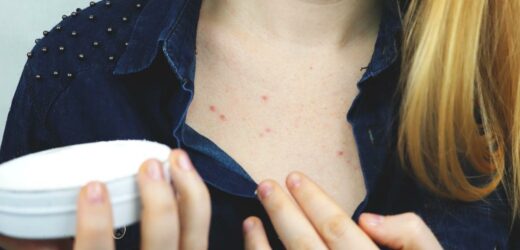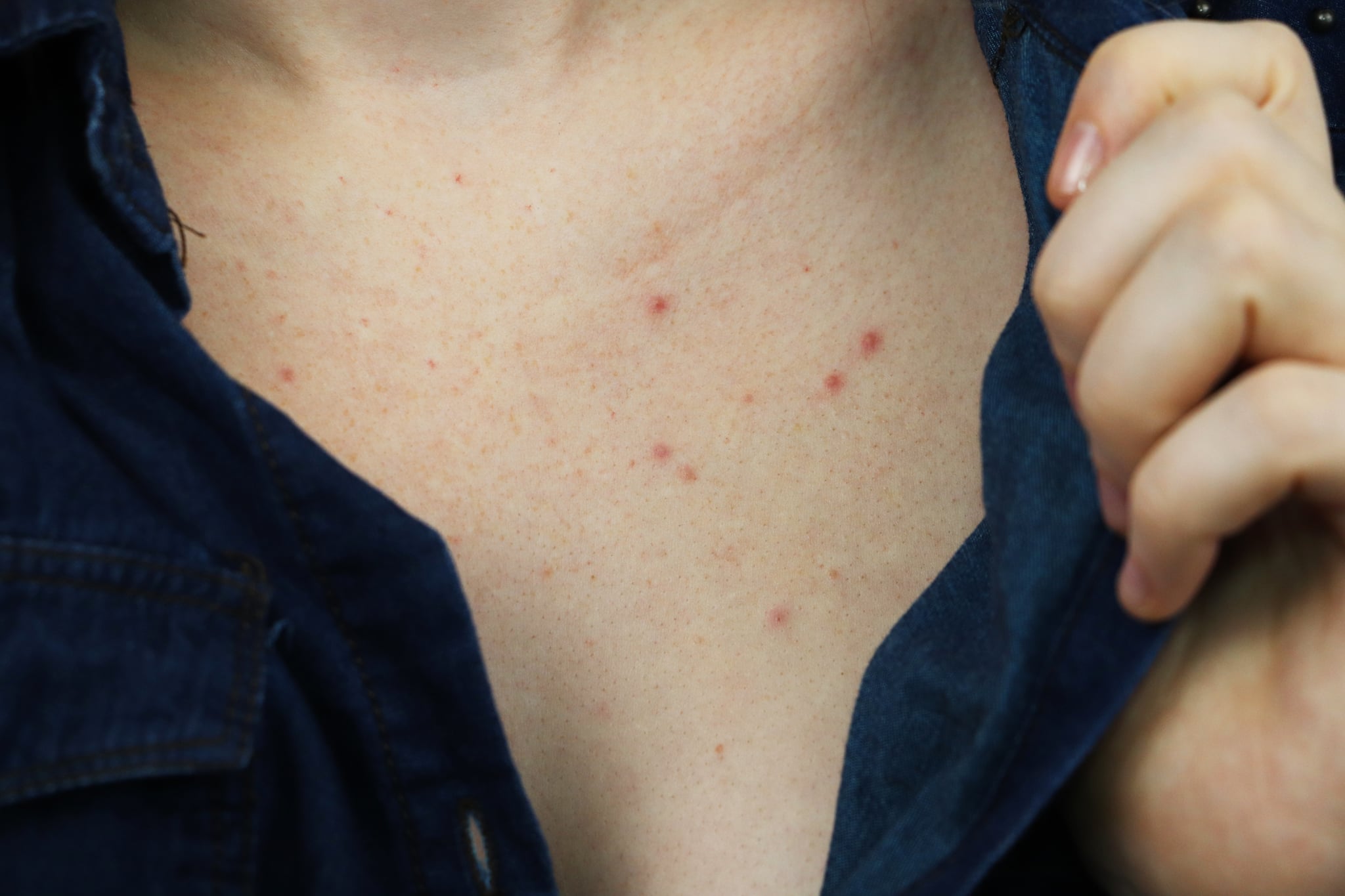Let’s face it: acne anywhere on your body can be frustrating. Some skin types are more prone to acne, and especially so when exposed to bacteria, oil, sweat, and inflammation. Then, with the hotter months just around the corner, sweat, humidity, and sunscreen formulas can further clog pores and magnify the problem. Body acne in particular can be tricky to treat (anyone else have trouble reaching their back?), but this is especially true with the chest area. The skin there is thinner than other parts of the body, which means traditional in-office and topical treatments can be too harsh.
So how do you get rid of chest acne? And more importantly, how can you prevent it from coming back? To get answers, we asked dermatologists Kenneth Mark, MD, Paul Jarrod Frank, MD, Luigi L. Polla, MD, and Dendy Engelman, MD. Keep reading for everything you need to know about treating this tricky area.
What Causes Acne on the Chest?
In short: chest acne, also known as folliculitis, is caused when pores get clogged with oil, dead skin cells, and other debris. These clogged pores result in inflammation and the formation of whiteheads, pimples, and cystic acne. The reason why you are getting it in this area can be the cause of numerous things, including genetics, hormones, and your lifestyle in general.
“Chest acne may be aggravated by lifestyle habits like the intake of short chain sugars present in fast food or sugar beverages, acute or chronic stress, excessive sun exposure, excessive working out, and the use of overly heavy moisturizers,” said Dr. Polla.
Wearing tight or occlusive clothing for too long after sweating from a workout or just being outside in the heat can also create acne on the chest. When you don’t shower right after, the sweat can cause bacteria to build up on your skin, leading to breakouts. (Think of it like you would with mask-ne — the material traps moisture in the area.) “Dermatitis, the result of irritation from clothing friction, makes the skin more vulnerable and susceptible to external factors like sweating and dirt; this can lead to the formation of acne,” Dr. Engelman said.
Types of Chest Acne
“Chest acne may have various levels of severity from mild lesions like whiteheads or blackheads to more aggressive like cysts, pimples, nodules, and papules,” said Dr. Polla. More severe chest acne with deep lesions like inflamed cysts and nodules can leave depressed or hypertrophic scars and dark spots. “The [toughest] type [to treat] is cystic acne as this has the largest, most uncomfortable lesions with the highest risk of scarring,” Dr. Mark said.
In general, there are five main types of chest acne:
- Apules: inflammatory lesions that sit superficially on the skin.
- Pustules: more commonly known as pimples, these inflammatory lesions are filled with pus and typically white or yellow in color (these are the ones we try to “pop”).
- Cysts: lesions formed when the pore ruptures underneath the skin, causing the inflammation to spill out into the surrounding tissue. The cyst then forms around it to stop the inflammation from spreading. These inflammatory lesions — usually formed from extreme stress and underlying hormonal imbalances — can linger for a long time and cause scarring.
- Open comedones: clogged hair follicles that are open (exposed to air) and turn black in color, also known as blackheads.
- Closed comedones: clogged pores, which close and are white or yellowish in color, also known as whiteheads.
How to Treat Chest Acne
When chest acne is not severe, making small lifestyle changes can help alleviate breakouts: showering after working out, wearing breathable clothing, and using a topical cream. As tempting as it might be to run errands or eat after a sweat sesh, it could be the root cause of your chest acne. When sweat sits on skin for a long period of time, it clogs pores and causes acne to develop. Therefore, rinsing after workouts will lead to significant improvements.
“To deep clean pores and prevent clogging, use a cleanser that contains salicylic acid and be sure to wash thoroughly at least once per day,” Dr. Engelman said. Salicylic acid will both treat existing breakouts while working to prevent more because they exfoliate, clear, and promote cell turnover. With tight clothing, the friction that rubs against your chest can irritate skin and make it more susceptible to clogging and breakouts.
Although topical products can work to reduce the inflammation and bacteria, Dr. Mark says they come with a warning. “The issue with any topical product, even prescription, is how to efficiently cover the large surface area. It is problematic to try and spot treat each lesion with a gel; therefore, I like the washes that can be applied in the shower and washed off after several minutes.”
Then, consider the food you’re eating. Fill your plate with more vegetables, fruits, and omega-3 fatty acids. “A low sugar diet is key,” Dr. Polla said. “Avoid spicy foods, beer, and most alcohol.”
And most importantly, whatever you do, do not pick or attempt to pop your chest acne. “The skin on the chest is significantly thinner than the face, and not treating chest acne, particularly cystic acne, can lead to scarring and should be evaluated by a board-certified dermatologist for oral therapy,” Dr. Frank said. The scabs and scars can take months to heal.
How to Prevent Chest Acne
Even once you’ve got your blemishes under control, the key is prevention. Knowing that all acne starts with a clogged pore, it’s important to cleanse the area to remove sebum and dead skin cells. “By removing the oily layer, one may reduce the plugs in the pores,” Dr. Polla said. “This will allow an effective drainage of the sebum and bacteria, preventing them from penetrating into the follicles and creating more inflammation.”
Exfoliating once or twice a week with a gentle scrub will remove dead skin cells that could create pore-blocking buildup, leading to breakouts. Then, if you’ve just worked out and are not near a shower, bring a change of clothes and wipe down your chest with a cleansing wipe.
Dr. Polla also recommends avoiding comedogenic (pore-clogging ingredients) skin-care products as they can cause blackheads, as well as acnegenic (produces or increases acne) ingredients, which can cause pustules. A lot of body lotions and shower gels are filled with fragrances that might smell amazing but may actually cause irritation or clog the pores. As always, when in doubt, see a dermatologist for more in depth treatment.
Source: Read Full Article



